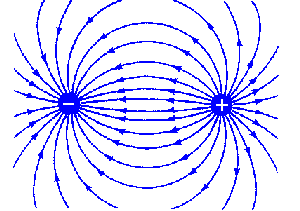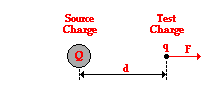Electric Field Study Guide
INTRODUCTION
Scientists have finally figured out why forces behave the way they do when two objects collide. But, it was difficult for them to comprehend the idea of forces acting without actually getting in contact with an object. Consider gravitational force, electric force, and magnetic force as starters. They used the concept of “field” to assist them in describing what was going on. They thought that there was a force field surrounding the item and that anybody entering it would experience it. Here, we’ll study the concept of the electric field in detail.
WHAT IS AN ELECTRIC FIELD?
- The surrounding area around any electrically charged item is defined as an electric field.
- The electric field is created by the electric charge or by magnetic fields that change over time.
- The electric field is accountable for the attraction forces that hold the atomic nucleus and electrons together at the atomic level.
- This is also known as an electrostatic field and defines the third law of motion.
- In case any other charge crosses that region, it will experience a force, as will the initial item.
DIRECTION OF AN ELECTRIC FIELD
- An electric field, like any other field, is a vector quantity ( it has a direction).
- Matters are somewhat more tricky in an electric field because there are two types of charges, and some pairs bind whereas others resist.
- In order to be in sync with one another, the direction of the electric field is determined by the direction of the positive charge.
- If you placed an additional positive charge close to the main charge and it was positive, the new charge would’ve been pushed away.
- As a result, the field vectors for a positive charge position in the center are pointing outward because a positive charge positioned near the area would be attracted to the negative charge, and the field vectors for a central negative charge point inward.
ELECTRIC FIELD INTENSITY
- The force felt by a unit positive charge put at a spot is the electric field intensity at that location.
- The intensity of an electric field is a vector quantity. The letter ‘E’ stands for it.
- Newton per coulomb is the SI unit of electric field intensity.
- A positive charge’s electric field intensity is always headed away from the charge, while a negative charge’s intensity is always oriented towards the charge.
- The formula for the electric field intensity is as such.
Electric field intensity = Force/ Charge
SUMMARY
- The electric field is the surrounding area around any electrically charged item.
- The field director for a positive charge point outwards, whereas the field director for a negative point.
- The force felt by a unit positive charge put at a spot is the electric field intensity.
FAQs
Q. What is meant by electric fields?
The surrounding area around any electrically charged item is defined as an electric field.
Q. Where is the electric field?
Electric fields can be observed in areas around the charge.
Q. What are electric fields examples?
Battery capacitors and cells generate electric fields. Also, light, microwaves, radio waves, etc., have components of the electric field in them.
We hope you enjoyed studying this lesson and learned something cool about Electric Fields! Join our Discord community to get any questions you may have answered and to engage with other students just like you! We promise, it makes studying much more fun!😎
REFERENCE
- Electric Fields: https://flexbooks.ck12.org/cbook/ck-12-physics-flexbook-2.0/section/15.2/primary/lesson/the-electric-field-phys/ Accessed 18th April 2022.
- Electric Fields:https://en.wikipedia.org/wiki/Electric_field Accessed 18th April 2022.



